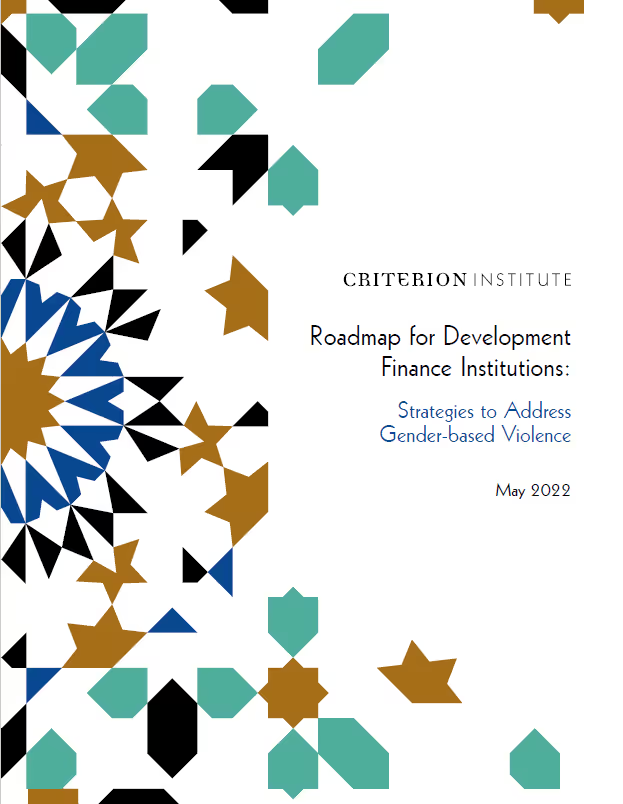
This Roadmap lays out strategies for development finance institutions (DFIs) to incorporate gender-based violence (GBV) risk assessment and mitigation as well as GBV prevention and survivor support lenses into their investments.In addition to being a barrier to sustainable development, GBV also poses investment risks at the operational, reputational, regulatory, and political levels. For DFIs, which have historically bridged the gap in markets between public policy objectives and private sector actors, incorporating a GBV lens is both an opportunity to increase impact and lower risks as well as to be a signaling mechanism of the importance of this work.
FOUR STRATEGIES FOR INCORPORATING A GBV LENS
The four strategies are grounded in considerations of DFIs’ unique role as well as their structures and the political economies in which they operate. They are:
- Assess Risks in the Project as Part of ESG Due Diligence and Determine the Material Impact on the Investment. This strategy it lays out a step-by-step process for DFIs to quantify and measure the risk of gender-based violence and enhance or supplement their risk assessment processes—the first step in safeguarding—to improve gender-based violence reduction outcomes.
- Partner with Client on Strategies to Reduce Company or Project-Level Gender-based Violence. This strategy lays out how DFIs can strengthen existing safeguarding frameworks and processes by integrating a GBV lens into a client’s social and environmental risk mitigation activities.
- Address Systemic Risk to the Portfolio by Integrating a Gender-based Violence Lens Across All DFI Operations and Processes. This strategy looks at how prevention, mitigation, and action on GBV can be moved out of the exclusive environmental and social (E&S) domain of typical DFI practice and built into institution-wide internal and investment processes.
- Proactively Invest in Gender-based Violence Reduction as Part of the DFI Portfolio. DFIs have a unique ability to deploy catalytic concessional capital and risk-sharing mechanisms can play a vital role in developing the nascent field of solutions to mitigate and prevent gender-based violence. The Roadmap highlights select opportunities in several sectors to illustrate how they might approach this.
